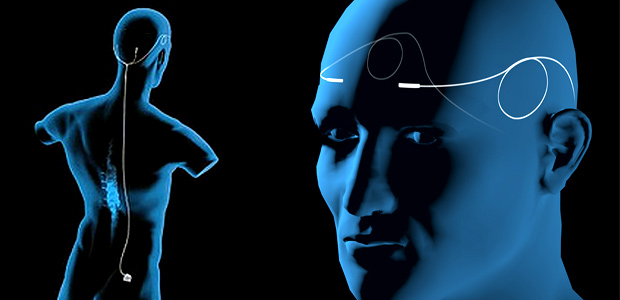After years of suffering from headaches, I decided to try occipital nerve stimulation to control my pain. This blog is to document my process to try to help educate others about the process and results.
Friday, August 30, 2013
Tuesday, July 2, 2013
What's in a Name?
As occipital and peripheral nerve stimulation for headaches become more popular, doctors and companies are rushing to put their name on the process. This can be a bit confusing as it seems some procedures now have several different names.
Technically, an occipital nerve stimulator covers only the occipital nerve. A peripheral nerve stimulator covers any nerves, particularly smaller unnamed branches. But doctors are finding that a combination of these seems to be the most successful, placing leads on both the occipital nerve (at the base of the skull) and on the supraorbital nerve (across the forehead). This particular placement has been coined as the "Reed Procedure," the "Transforma Procedure," and the "Omega Procedure." They are all essentially the same thing.
Hopefully one day a single name will stick and be used to avoid confusion but for now be aware that there are several names floating around which all mean the same thing.
Tuesday, February 19, 2013
Updated Doctors List
I have finally updated the list of doctors that do ONS. I've made a "page" out of it. You can find it by clicking on the page title "List of Doctors" just under the blog title and description. The list has gotten long (which is a good thing!) so I've divided it up into regions of the United States, as well as a section for Canada and "other," which currently only includes Australia. If you would like your doctor added to the list, please email me at onstim@gmail.com or leave a comment for this post. I spent all day combing my emails and other resources but I'm sure I've missed a few here or there.
I've also updated the links section with a few things people might find helpful.
I'm posting the updated list of doctors below, just because I thought it might be helpful.
Thursday, January 31, 2013
Occipital Nerve Stimulation versus Peripheral Nerve Stimulation
I apologize for not posting on this blog much anymore. I have been spending most of my time on the Occipital and Peripheral Nerve Stimulation group on Facebook. We now have almost 250 members, most of them very active and willing to help others. To me that is a more valuable resource since there are multiple opinions and experiences provided instead of my one-sided story. It is a closed group so any Facebook friends outside the group cannot see what you post (your medical issues are kept private) and the group itself has been amazingly helpful and supportive.
However, I think what I have learned in the past year or so is important to post here for those who stumble across this blog looking for information. I have always called my stimulator an occipital nerve stimulator. Turns out, it is really a peripheral nerve stimulator. Although the terms are often used interchangeably, when it comes to surgery, there is a difference. The difference is in which nerves the leads of the stimulator are placed on. Everything else is basically the same...the device, choice of battery placement, how the leads are put in etc.
Occipital Nerve Stimulation (ONS):
This is more common. The surgeon places the leads on the main branch of the occipital nerve, which is located in your neck, around your C1-C2. This is where the incision will be made. Also, if necessary, many doctors are finding it more effective to put wires in the front of a patient's head as well, usually on the supraorbital nerve. This, however, means they often make an incision on your face, usually by the temple. The idea is that with leads in both the front and back, the whole head will be covered. For some people this is the case and is great. For others (like myself), peripheral nerve stimulation is a better option.
Peripheral Nerve Stimulation (PNS):
This is a less common option. There are fewer surgeons who do this type of surgery because it's tougher. PNS involves placing the leads on any peripheral nerve...generally any nerve at all that is giving you pain. This could include the trigeminal, auriculotemporal, or any branch of the occipital nerve, for example. Incisions are made close to the nerve being stimulated, wherever that may be. Surgeries like this are harder because there are many blood vessels in the head and not a lot of room to work. So just because a surgeon says he does occipital nerve stimulation does not mean he does peripheral nerve stimulation. I just want to be clear about that.
 |
| Image from RahulGladwin.com |
This is by no means proved by any research and is nothing other than my opinion, but from talking to people that have many kinds of pain and have had many different surgeries in many different states and countries, I'm comfortable saying that peripheral nerve stimulation seems to be more successful in managing pain than occipital nerve stimulation...if, of course, your pain is not on your occipital nerve. It really only makes sense. If you have pain from your trigeminal nerve, put the lead on the trigeminal nerve.
I thought this was a topic worth clarifying for anyone researching surgeons for one of these stimulators. That was you can use the proper terminology to make sure you and your doctor are on the same page. If your surgeon only does ONS but you think you'd be better off with PNS, find another surgeon. People seem to have a loyalty to their doctor(s), often based on nothing substantial, and you have to give that up to do what is best for yourself. If you're going to get something implanted in your body, you might as well get one that does you the most good.
Subscribe to:
Posts (Atom)

